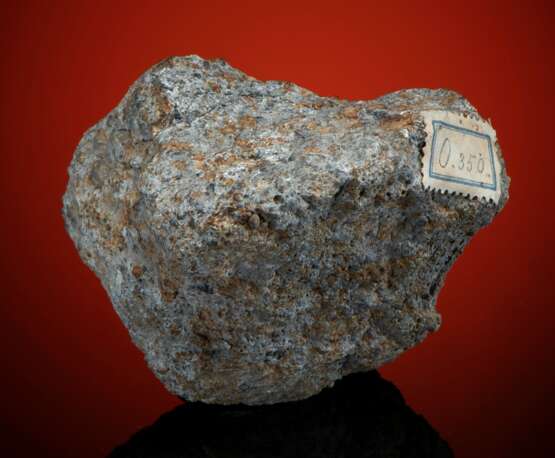BJURBÖLE — RECOVERED AFTER CRASHING THROUGH BALTIC SEA ICE, AN INDIVIDUAL FRAGMENT WITH MUSEUM LABEL
23.02.2021 10:00UTC -05:00
Classic
Verkauft
21250USD $ 21 250
| Auctioneer | CHRISTIE'S |
|---|---|
| Veranstaltungsort | Vereinigten Staaten, New York |
Archiv
Die Auktion ist abgeschlossen. Es können keine Gebote mehr abgegeben werden.

ID 491269
Los 59 | BJURBÖLE — RECOVERED AFTER CRASHING THROUGH BALTIC SEA ICE, AN INDIVIDUAL FRAGMENT WITH MUSEUM LABEL
Schätzwert
$ 6 000 – 8 000
“A large and bright meteor flew over our city from the northwest to the southeast at 9.30 pm. The meteor lit up the area like a giant light bulb. The clouds had golden undertones. After about a minute, the meteor broke into many small pieces by making a thunderous noise. The sound lasted for several minutes. The blast shook houses to their foundations. People went out of their homes and invaded the streets and gardens. Some thought that the artillery had fired in the Fortress of Viabord while others thought it was the end of the world. Reportedly, the same phenomenon was followed in the eastern and western part of the city. To have a better understanding of this phenomenon, we invite the public to send comments to the meteorological observatory. It is important to know when and for how long the phenomenon was seen, how much time elapsed between the appearance of the fireball and the explosion, and also the duration of the explosion and in which direction the phenomenon moved. Ideally, the indicator should indicate on a drawing, the direction of the meteor compared with the position of the witness.”
As a result of Finnish citizenry’s efforts, the trajectory of the fireball was triangulated and its impact point was determined to be in the Baltic Sea just off the coast. The impact created a three-meter hole in the ice about 50 kilometers from Helsinki. Casework was constructed from which seawater could be partitioned and partially siphoned to enable the extraction of the meteorite. The main mass is on display at the Finnish Museum of Natural History, from where this specimen was obtained in an exchange.
Bjurböle is an extremely distinctive meteorite. It is unusually friable and its fine-grained creamy matrix is packed with chondrules (spherical silicate-rich droplets that aggregated along with dust, metal and sulfide to form the planets and asteroids). Various chondrule types are in evidence. This sample features a well-affixed, slightly yellowed, catalog stamp of the Finnish Geological Museum in which the “0.350” written is a reference to this sample’s estimated weight. This is a fine example of a historic meteorite — and one of the very few meteorites recovered after falling into a body of water.
Christie's would like to thank Dr. Alan E. Rubin at the Department of Earth, Planetary, and Space Sciences, University of California, Los Angeles for his assistance in preparing this catalogue.
73 x 75 x 58mm (3 x 3 x 2.25 in.) and 339.9g (0.75 lbs)
| Adresse der Versteigerung |
CHRISTIE'S 20 Rockefeller Plaza 10020 New York Vereinigten Staaten | ||||||||||||||
|---|---|---|---|---|---|---|---|---|---|---|---|---|---|---|---|
| Vorschau |
| ||||||||||||||
| Telefon | +1 212 636 2000 | ||||||||||||||
| Fax | +1 212 636 4930 | ||||||||||||||
| Nutzungsbedingungen | Nutzungsbedingungen | ||||||||||||||
| Versand |
Postdienst Kurierdienst Selbstabholung | ||||||||||||||
| Zahlungsarten |
Banküberweisung | ||||||||||||||
| Geschäftszeiten | Geschäftszeiten
|


